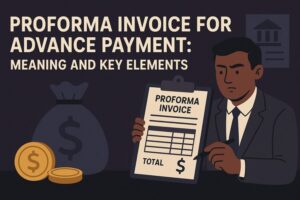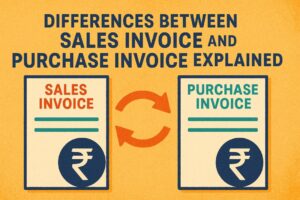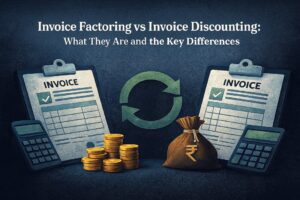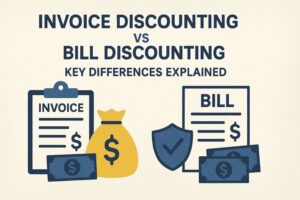Find Out the Key Differences Between an Invoice and a Bill
- 20 Nov 25
- 8 mins
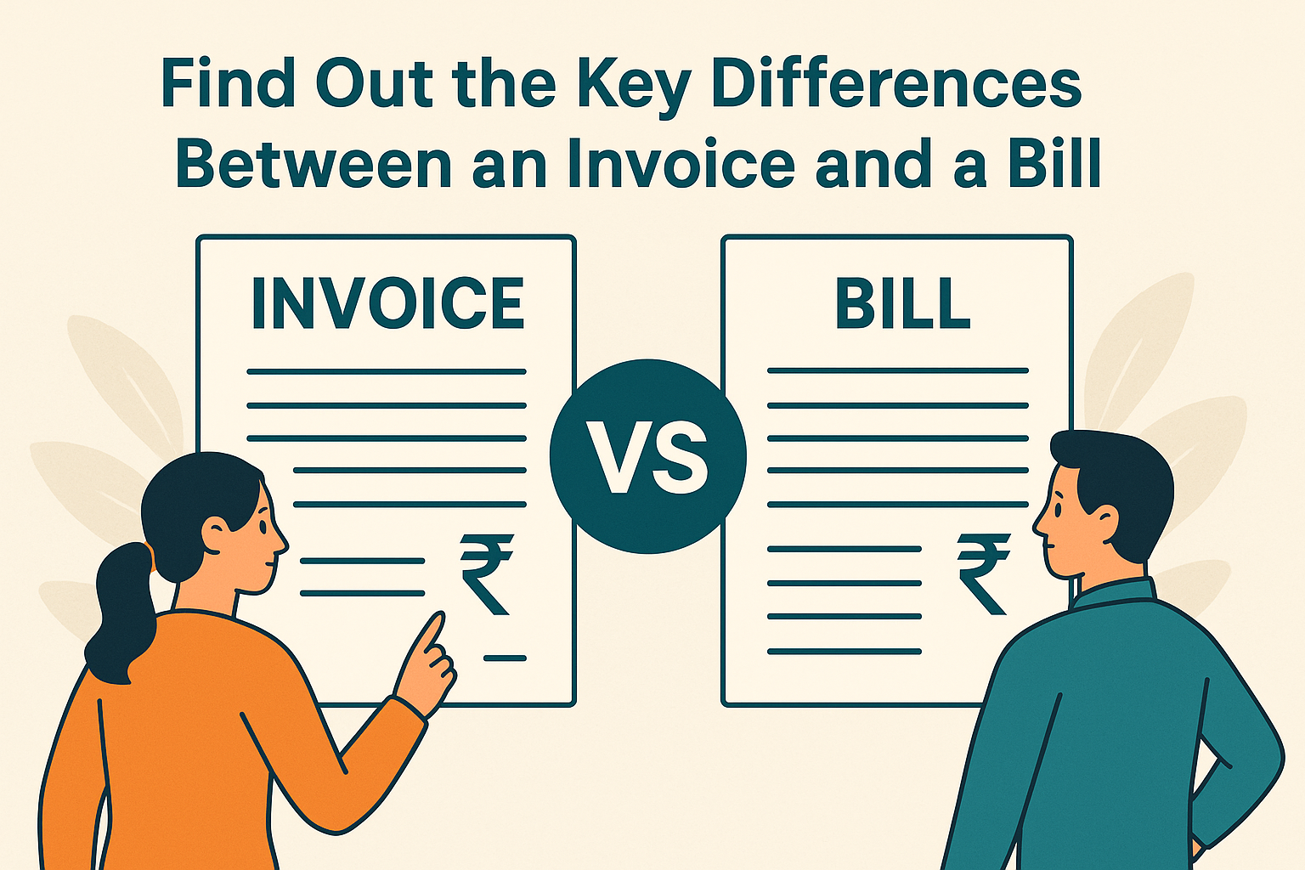
Find Out the Key Differences Between an Invoice and a Bill
Key Takeaways
- The difference between invoice and bill lies primarily in purpose. An invoice requests future payment, while a bill requests immediate payment.
- Invoices are used mostly in B2B credit transactions, whereas bills are used in B2C cash transactions.
- The difference between invoice and bill also appears in structure. An invoice includes detailed customer data, tax info, and terms, while a bill has minimal details.
- Invoices carry a unique invoice number for GST compliance, but bills usually do not require such identifiers.
- Understanding the difference between invoice and bill is essential for GST filing, accounting accuracy and smooth business operations.
In 2025, the Government of India rolled out new invoicing rules. As per the new regulation, all GST-enrolled businesses with a threshold of ₹10 crore or more must upload invoices within 30 days of documentation.
But, most GST-registered taxpayers and small business owners are still stuck with the age-old question, “Is an invoice the same as a bill?” To resolve this query once and for all, this blog clearly explains the difference between invoice and bill.
What is the Difference Between an Invoice and a Bill?

‘I will send an invoice to you after completing the project’ or ‘I need to pay my electric bill this week’.
We often use these kinds of sentences, considering invoices and bills as synonyms. While they share some similarities, they are fundamentally two different words. Following is a tabulated illustration to help you understand better the difference between invoice and bill:
| Particulars | Invoice | Bill |
| What is it? | An invoice serves as a legal financial document for accounting purposes. | A bill stands as evidence of a transaction. |
| Issuing Purpose | To request payment with terms | To state an amount that is either owed or due now |
| Issued between | Business-to-business | Business-to-consumer |
| Payment Timeframe | It comes with a payment period, like 30 days or a week. | Though a bill often requires immediate payment, sometimes it comes with a certain timeframe. |
| Contents | Invoice template comes with number, issuance date, business details, customer details, tax information, due amount, payment details such as via credit card or bank transfer, etc. | Bills include the total cost, applied tax and date with no customer details. |
| Transaction Type | Invoices are for credit transactions for sold goods or provided services. | Bills are for cash payment that should be completed in one transaction. |
| Unique Number | Invoices include a unique invoice number for taxation and accounting. | Bills are often non-numbered. If they are, the bill number is insignificant for GST filing. |
| Use in GSTR Filing | An invoice must comply with filed returns and ITC claims. | A bill is inessential when filing the GST return. |
💡For your bill payments and tracking business transactions, use the PICE App.
A Brief Overview of an Invoice
An invoice is a commercial statement of a payment method between businesses. It stands as an accounting document issued by the seller/vendor to the buyer to request credit. Generally, a company issues around 56 invoices per day manually via different payment methods.
Invoices are usually sent for goods that have already been supplied or services that have been provided. It is a structured payment request with a detailed breakdown of the items or services, along with the total due amount, buyer details and payment terms.
What Are the 10 Types of Invoices?
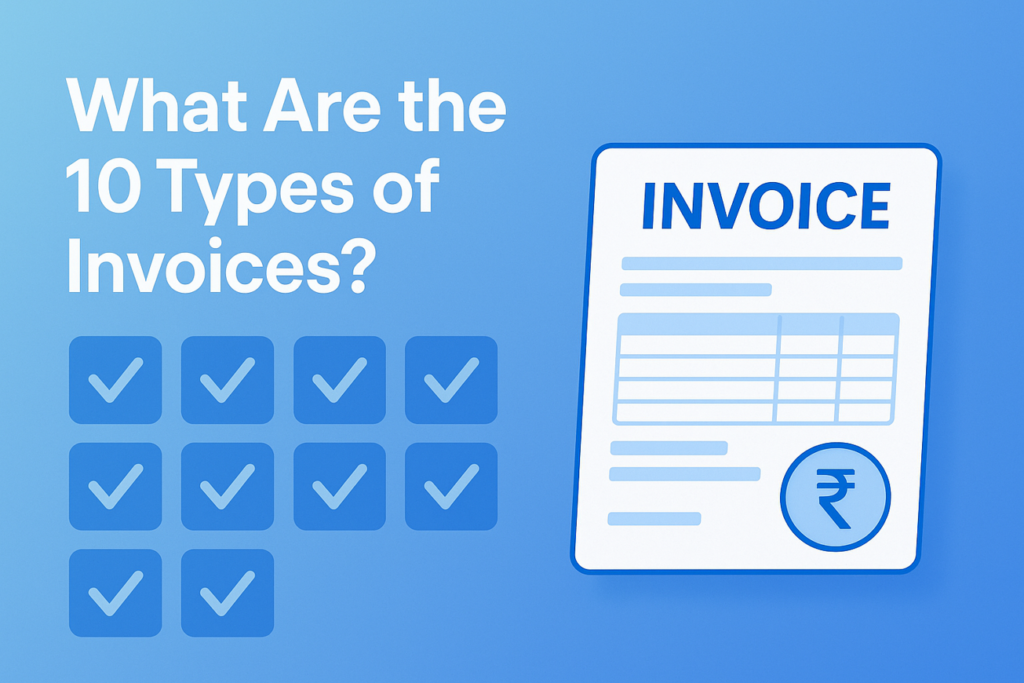
- Standard Invoice: Also known as a final invoice, this is the most common type. It lists the goods or services provided and the amount you need to pay.
- Recurring Invoice: This invoice is used for ongoing billing cycles, like monthly subscriptions or retainer fees.
- Tax Invoice: When GST-registered vendors issue an invoice mentioning the tax deductions, it is known as a tax invoice or GST invoice.
- E-invoice: E-invoice or an electronic invoice is a virtually created, transmitted invoice that comes in a standardised format.
- Commercial Invoice: This invoice is for cross-border trade of goods. It declares the customs duties of international sales. Many taxpayers also define this as a customs declaration.
- Proforma Invoice: A proforma invoice is a preliminary bill that sellers send to buyers with an estimation of the total cost before delivering goods or services.
- Credit Invoice or Notes: This invoice mirrors a downward revision. It corrects a mistake or provides a refund based on a previous invoice due to after-sales discounts or damaged goods.
- Debit Invoice or Notes: This invoice shows the increased amount of a previous invoice due to changes or extra charges.
- Interim Invoice: It is a partial payment request. Sellers often issue this before delivering the entire goods or services.
- Timesheet Invoice: Timesheet invoices are the transactional document where hourly payment is recorded. Freelancers, advocates, legal counsellors, etc., often generate timesheet invoices for their services.
What Are the Uses of an Invoice?
An invoice is an instrument of financial record-keeping. It keeps a track of your income and sales for future financial uses. However, that is not all! Take a look at some of the additional uses of an invoice:
- Payment Tracking: Invoices allow businesses to monitor all overdue payments and accounts receivable ensuring a smooth cash flow.
- Legal Protection: Being a legal evidence, an invoice serves as proof during audits and payment disputes.
- Easy Tax Filing: A proper record of sales using invoices simplifies the tax calculation and filing process.
- Business Analytics: Since invoices are the keeper of all sales and B2B transactions over the years, by monitoring them, you can analyse the business growth and identify sales trends of your company.
- Professional Image: A well-structured invoice enhances the brand identity and reputation of an organisation among suppliers.
- Customer Communication: Businesses can also use their invoices as a means of communication about future sales and business policy modifications.
A Brief Overview of a Bill
A bill is a payment request for goods or services that have already been provided. It is usually created by the seller and received by the customer after the transaction. Generally, all the regular expenses, such as utilities, rent or subscription services, include monthly or annual bills. They typically ask for prompt payment of the amount due and when paid, the bill becomes proof of payment.
What Are the Types of Bills Under Goods and Services Tax?
Primarily, there are 2 types of billing solutions under GST, including:
1. Bill of Supply
A bill of supply is a document used for non-taxable or exempt business transactions under GST. Composition taxpayers can also issue it. In exempted cases, a GST-registered person cannot charge or collect GST from the buyer. Therefore, unlike a standard tax invoice, it does not include any tax amounts.
2. E-way Bill
An e-way bill is an electronic waybill generated by GST-registered sellers, transporters or buyers through the government's e-way bill portal. According to the GST law, transporters must carry an e-way bill when moving goods worth more than ₹50,000.
Note: Apart from the above-mentioned billing processes, companies offering prolonged services or goods issue different types of bills to their consumers in a B2C setting, such as utility bills, internet bills, phone bills, etc. All of them usually contain the date, the due amount, the name of the seller, and the provided goods/ services.
What Are the Uses of a Bill?
Bills are important for daily business and financial management. While they are simpler than invoices, they serve several important functions:
- Immediate Payment Request: Bills payable are for immediate payment. Whether it is a restaurant bill or a utility bill, the expectation for payment is right on the spot or shortly thereafter.
- Transaction Confirmation: Bills act as proof that a product or service was received. They are especially useful for consumers who need a record of purchase for warranty, return or exchange purposes.
- Simplified Record-Keeping: Although not as detailed as invoices, bills still contribute to the overall financial records of a business, particularly for cash-based transactions.
- GST Compliance for Certain Transactions: While bills are not typically used for input tax credit (ITC) claims, specific types, such as the bill of supply or e-way bill, still play a role in maintaining compliance under GST regulations.
Conclusion
Although invoices and bills are both essential to financial documentation, they serve different purposes. This clarity can make a significant impact on how you manage your accounts. Knowing the difference between invoice and bill helps business owners file the returns accurately, maintain financial stability and keep a positive relationship with your suppliers and consumers.
FAQs
 By
By 







